No interest in old fashioned research
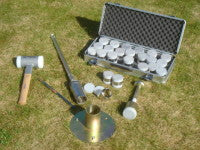
The most useful subjects relate to things like particle size distribution in soils and sands and its relationship with hydraulic conductivity and pore space. Or field measurements of infiltration rate and bulk density.
These are all entirely pertinent features in relation to the performance and improvement of natural turf surfaces. In fact, I would say that most of the situations we're asked to deal with from a technical point of view are concerned with these very important areas of turf science in one way or another.
I think this lack of recent research is because the kinds of investigation these subjects require are, by their nature, slow to generate data. They also require a good deal of specialist and expensive scientific equipment and a lot of understanding on the part of the researchers. Trials and investigations are, therefore, costly to undertake.
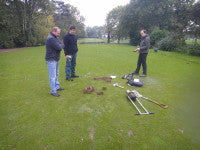
Some months ago, I wrote in these pages about the possibility of developing a 'grand unifying theory' covering the key questions surrounding drainage, moisture retention, attenuation etc., and relating to both natural and artificial surfaces. Since then, we've continued to look at this in great detail and are currently concerned with the relationship between particle size distribution in growing media, porosity and hydraulic conductivity - seemingly very old and unfashionable subject areas.
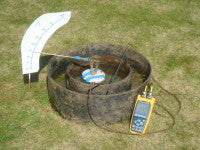
On looking through the literature, what has been a revelation is the amount of perfectly relevant information that has already been published, much of it many years ago. To discover this, one often has to look outside of the turf industry, for example in the areas of tropical agriculture or filtration, obscure and esoteric areas that never mention sports turf.
The Hooghoudt equation is famous to many people and it has been around for a long time. It determines the separation at which lateral pipe drains should be placed in order to achieve an adequate degree of drainage in natural soil. It requires the input of the hydraulic conductivity of the soil above and below the pipe depth, and one would imagine that this was directly relevant to sports pitch development.
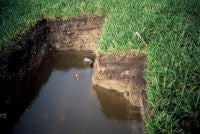
Nevertheless, Hooghoudt provides a basis from which to start building a more complex model. Such a model might incorporate the finer points of sports pitch construction, for example the different values of hydraulic conductivity of topsoil and subsoil, the effects of treatments such as sand banding or the incorporation of a sand carpet, the use of rootzone materials or other amendments and soil structural factors, and the effects of treatments such as verti-draining or slitting.
The Hooghoudt equation was developed in 1940. We're also looking at the Kozeny-Carman equation which relates particle size distribution to hydraulic conductivity and was developed in 1958. This, in turn, was a refinement of the Hazen equation which does a similar thing and was developed when King Edward VII was on the throne before World War I!
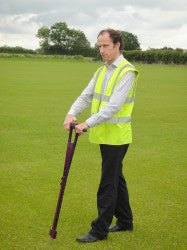
For the same to be true of natural turf surfaces, the equivalent fundamental principles need to be defined and applied in exactly the same way.
The variability of outcome due to unforeseen factors, previously defined as 'natural' phenomena (and therefore not to be fully understood), need to be eliminated in order that natural turf systems may become, once more, the preferred playing surface for most sports. This is very difficult to do, because the factors concerned are so very complex.
Soil and growing media are hard to understand fully, but the industry must not lose sight of the need to keep doing this if sport on natural grass is to continue at the highest levels.
Dr Tim Lodge
www.agrostis.co.uk

